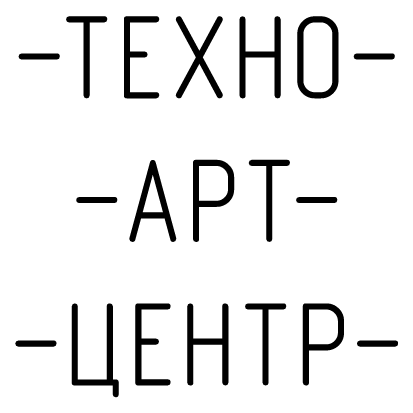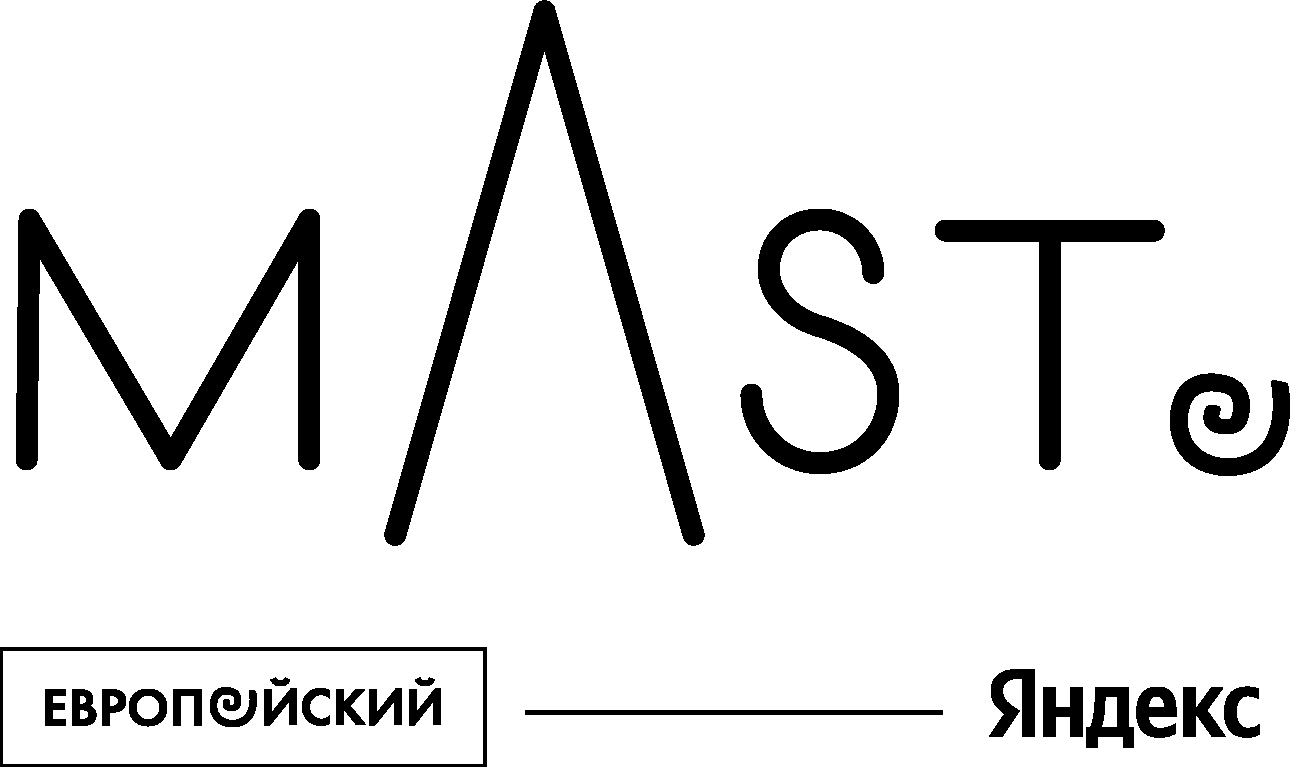Panel Discussion '20
“Online Archives and Collections of Media Art”. Part II, 5th December 2020
Vladlena Gromova
Introductory word on the project Open Database of Interdisciplinary Art in Russia
Open Database of Interdisciplinary Art in Russia (MIR) is a thematic resource focusing on events related to the intersection of media, art, and technology. Digital format of the database makes it possible to restore the discourse of interdisciplinary practices in Russia and reflect the current processes in this area. The project is aimed at the audience of curators, researchers, and artists. It is planned to launch the beta version of the database online by July 2021. Afterward, it will continue to grow and develop. Today’s panel was organized to discuss the experience of creating online archives of media and digital art in Russia.
Alexey Kupriyanov
Independent data analyst, visiting lecturer at the European University. Data in Motion: How to Organize the Database so that it Becomes an Army, not a Cemetery?
In his speech, Alexey touched upon the main structural problems of historical databases, gave advice on organizing data, explained the difference between medium and big data, and also emphasized the importance of maximum data atomization and the possibility of its verification.
The database is not a book, but a tool for analytical calculations. Historical databases are often created without regard for their further use, as a result they become “cemeteries” of information. Structurally databases are lists of pointers united by cross linked tables. Since analytical programs can only work with tables, the data can only be presented as tables.
There is big and medium data: machines and algorithms are most often involved in collecting the big data, a small research group cannot collect this amount of information. Medium data contains much less information that can be collected by a group of people or researchers.
Tips for organizing data: maximum formalization of data is required (“you have to think like the machine”); delegate calculations to computer; it is worth turning research questions and problems into data that can be manipulated and then analyzed; it is worth moving from aggregation to atomization and verification of data, since only a person can define the minimum unit of data and ensure the possibility of verifying information (therefore, the best historical databases are based on paper archives).
The database is not a book, but a tool for analytical calculations. Historical databases are often created without regard for their further use, as a result they become “cemeteries” of information. Structurally databases are lists of pointers united by cross linked tables. Since analytical programs can only work with tables, the data can only be presented as tables.
There is big and medium data: machines and algorithms are most often involved in collecting the big data, a small research group cannot collect this amount of information. Medium data contains much less information that can be collected by a group of people or researchers.
Tips for organizing data: maximum formalization of data is required (“you have to think like the machine”); delegate calculations to computer; it is worth turning research questions and problems into data that can be manipulated and then analyzed; it is worth moving from aggregation to atomization and verification of data, since only a person can define the minimum unit of data and ensure the possibility of verifying information (therefore, the best historical databases are based on paper archives).
Anastasia Tarasova
Chief of the Archival Collection of the Archive of the Garage Museum of Contemporary Art, Moscow. Garage Museum of Contemporary Art Archives: Between Paper and Data
Anastasia spoke about the history and structure of the archive of the Garage Museum of Contemporary Art, and also shared the history of the creation of the Russian Art Archive Network.
The Archive of Garage museum does not store works of art, but mainly focuses on primary resources, information about artistic life and events happening around art. The archive's collection began in 2012. It includes private archives of artists, curators, gallery owners, collectors and small institutions, ephemeris (paper and digital), as well as the institutional archive of the museum. The archive includes the paper archive, the media archive, and the library.
The main task of the archive is to create a database of primary documents and sources that will allow researchers to recreate the chronology of post-war art in Russia.
The Garage Museum website offers its visitors two catalogues: the catalogue of the museum's library, and a separate database on the Russian Art Archive Network (RAAN) website, created by the museum in partnership with other institutions. The museum has been working on the RAAN project since 2013. Today this database is presented in the second version and contains information about the collection of the museum and project’s partners.
The Archive of Garage museum does not store works of art, but mainly focuses on primary resources, information about artistic life and events happening around art. The archive's collection began in 2012. It includes private archives of artists, curators, gallery owners, collectors and small institutions, ephemeris (paper and digital), as well as the institutional archive of the museum. The archive includes the paper archive, the media archive, and the library.
The main task of the archive is to create a database of primary documents and sources that will allow researchers to recreate the chronology of post-war art in Russia.
The Garage Museum website offers its visitors two catalogues: the catalogue of the museum's library, and a separate database on the Russian Art Archive Network (RAAN) website, created by the museum in partnership with other institutions. The museum has been working on the RAAN project since 2013. Today this database is presented in the second version and contains information about the collection of the museum and project’s partners.

The archive media library is stored in three places: on server, in cloud storage and on physical media (in a robotic library on Panasonic optical disks, as well as on special LTO film cartridges, each of which can store 15 or 30 TB of data).
The Garage Archive database has been included in the EAN, a unified database on contemporary European art.
The Garage Archive database has been included in the EAN, a unified database on contemporary European art.

Maria Udovydchenko
Keeper of the Archive of the Garage Museum of Contemporary Art, St. Petersburg. Collections of the Archive of the Garage Museum of Contemporary Art in St. Petersburg: from Analogue Documents to Media Carriers
Maria spoke about the formation of the St. Petersburg branch of the Archive of the Garage museum, and also focused on the difficulties that a keeper faces when working with digital documents, their storage, description, and representation.
The first archival records were passed to St. Petersburg’s branch of the Garage Archive in 2018. Those were the funds of Andrey Khlobystin and Sergey Chubraev. Mostly the collections contain analog documents, but over two years, digital files have also been added to the storage. Today, along with analog documents, they are being displayed on the Archive's website in order to make them available to researchers.
The first challenge in dealing with digital documents is their attribution. While working with a digital document, there is no way to carry out handwriting attribution. There are also difficulties in determining the date of creation of the document. Microsoft Word files contain the date the file was created, but it could have been updated many times, and sometimes there is no information inside the source that allows you to relate it to a specific time frame. In the situation of a digital document, it is often difficult to determine its creator.
Another problem is the issue of the copy and the original. The file can be transferred from one computer to another, undergoing transcoding. The funds contain text documents that have yet to be decoded. In this situation, the question arises: what is to be considered the original, the original document, or the decoded text?
One more challenge is the storage of outdated websites. Often they look like a set of folders with images and the archivists are faced with the question of their description and representation on the archive website. In addition, in digital documents, it is more difficult to separate the draft from the final copy and the question arises about the value of the document in a situation where it can be endlessly replicated and redistributed.
The first archival records were passed to St. Petersburg’s branch of the Garage Archive in 2018. Those were the funds of Andrey Khlobystin and Sergey Chubraev. Mostly the collections contain analog documents, but over two years, digital files have also been added to the storage. Today, along with analog documents, they are being displayed on the Archive's website in order to make them available to researchers.
The first challenge in dealing with digital documents is their attribution. While working with a digital document, there is no way to carry out handwriting attribution. There are also difficulties in determining the date of creation of the document. Microsoft Word files contain the date the file was created, but it could have been updated many times, and sometimes there is no information inside the source that allows you to relate it to a specific time frame. In the situation of a digital document, it is often difficult to determine its creator.
Another problem is the issue of the copy and the original. The file can be transferred from one computer to another, undergoing transcoding. The funds contain text documents that have yet to be decoded. In this situation, the question arises: what is to be considered the original, the original document, or the decoded text?
One more challenge is the storage of outdated websites. Often they look like a set of folders with images and the archivists are faced with the question of their description and representation on the archive website. In addition, in digital documents, it is more difficult to separate the draft from the final copy and the question arises about the value of the document in a situation where it can be endlessly replicated and redistributed.

Alina Stulikova
Leading Specialist of the Film and Media Arts Department of the Pushkin State Museum of Fine Arts. How Media Art came to the Pushkin Museum: On the Experience of Creating a Collection of New Media in a Classical Museum
In 2016 the Department of Film and Media Art was opened in the Pushkin Museum. Olga Shishko, the founder of the MediaArtLab organization, was appointed as its head. When Olga took on the job in the museum, there was no media art collection, and the department was faced with the task of creating one. In 2017 the process of forming the collection began, and most importantly, the preparation of a theoretical and practical basis for its formation.
What goes into storage in the media arts department? In contrast to the material object of art, media art in museum storage is a collection of objects, information and license to a work of art that allows reconstructing the original intention of the artist. At that time, the instruction of the Ministry of Culture on the storage of museum items in Russia did not allow to approach of the storage of a museum item in this way.
Therefore, in 2018 the museum worked out the Regulation for the permanent use, storage, accounting, and description of museum items related to the collection of film and media art collection of the Pushkin State Museum of Fine Arts, which was guided by the instructions from 1985 but was adapted to the requirements of media art storage. The new Unified Rules for the storage of museum items in Russia, coming into effect in 2021, include guidelines for the storage of media art based on the decisions formed in the Regulation made by the Pushkin State Museum of Fine Arts.
The collection of media art in the museum consists of works that mostly can be stored in digital form. Among other reasons, this is due to the issue of the availability of storage space. In the case of media art, the artwork in storage turns into a set of materials, which includes the following: text (technical rider for installation), objects (those included in the artwork, and technical means for its representation), multimedia (video, audio, photo, source codes of executable scripts, etc.), accompanying documentation (license agreements). Due to the specifics of the media art market, the artwork is placed in storage not on the basis of an exclusive right agreement, but on the basis of a license agreement. The first artworks to enter the collection were three pieces by the Provmyza art group.
When installing works of media art, the employees need to be in touch with the artists in order to correctly develop the instruction for its installation, which is an important part of storing the artwork. Correct instruction allows proper representation of the author's idea. To give an example of such a dialogue between the museum and the artist, Alina talked about the process of making the instruction for the installation of Alexandra Dementieva's work “Unbearable Lightness”, which became the first interactive installation in the museum's collection, and Dmitry Krymov's piece “The Last Supper”. In the latter case, the museum has developed three options for exhibiting the work: installation and performance, installation only, and a screening of a video work. For each of the options the museum together with the artist worked out detailed instructions for exhibiting.
What goes into storage in the media arts department? In contrast to the material object of art, media art in museum storage is a collection of objects, information and license to a work of art that allows reconstructing the original intention of the artist. At that time, the instruction of the Ministry of Culture on the storage of museum items in Russia did not allow to approach of the storage of a museum item in this way.
Therefore, in 2018 the museum worked out the Regulation for the permanent use, storage, accounting, and description of museum items related to the collection of film and media art collection of the Pushkin State Museum of Fine Arts, which was guided by the instructions from 1985 but was adapted to the requirements of media art storage. The new Unified Rules for the storage of museum items in Russia, coming into effect in 2021, include guidelines for the storage of media art based on the decisions formed in the Regulation made by the Pushkin State Museum of Fine Arts.
The collection of media art in the museum consists of works that mostly can be stored in digital form. Among other reasons, this is due to the issue of the availability of storage space. In the case of media art, the artwork in storage turns into a set of materials, which includes the following: text (technical rider for installation), objects (those included in the artwork, and technical means for its representation), multimedia (video, audio, photo, source codes of executable scripts, etc.), accompanying documentation (license agreements). Due to the specifics of the media art market, the artwork is placed in storage not on the basis of an exclusive right agreement, but on the basis of a license agreement. The first artworks to enter the collection were three pieces by the Provmyza art group.
When installing works of media art, the employees need to be in touch with the artists in order to correctly develop the instruction for its installation, which is an important part of storing the artwork. Correct instruction allows proper representation of the author's idea. To give an example of such a dialogue between the museum and the artist, Alina talked about the process of making the instruction for the installation of Alexandra Dementieva's work “Unbearable Lightness”, which became the first interactive installation in the museum's collection, and Dmitry Krymov's piece “The Last Supper”. In the latter case, the museum has developed three options for exhibiting the work: installation and performance, installation only, and a screening of a video work. For each of the options the museum together with the artist worked out detailed instructions for exhibiting.

Victoria Ilyushkina
Curator of the Cyland video archive and video programs of the CYFEST festival. Cyland Video Archive: Video Storage and Demonstration
Founded in 2007 by Anna Franz and Marina Koldobskaya, CYLAND is a nonprofit organization dedicated to expanding the intersection of art and technology. Cyland Archive and Media Lab are created by artists and are maintained by artists. Cyland Media Lab was founded in 2007. CYLAND annually hosts CYFEST, an international media art festival.
The CYLAND archive is directly related to the festival, it was started as an attempt to archive the works presented in the festival program. It has now expanded to include an institutional archive and the documentation of festival's events such as lectures and performances. The archive also includes two special sections of video archive and sound archive. Recently, the department for the storage of media art works created by artists in cooperation with the CYLAND laboratory has been actively developed.
The task of the CYLAND video archive is to promote works of video art and create a database of Russian video artists. It is represented on the CYLAND’s website as an open database of works available to artists and curators, allowing them to get acquainted with the works of Russian artists. Cyland's video archive covers the time period from the late 1980s to the present. The representation of artists on the archive website allows it to function as a medium between artists and institutions that are interested in them.
The CYLAND archive is directly related to the festival, it was started as an attempt to archive the works presented in the festival program. It has now expanded to include an institutional archive and the documentation of festival's events such as lectures and performances. The archive also includes two special sections of video archive and sound archive. Recently, the department for the storage of media art works created by artists in cooperation with the CYLAND laboratory has been actively developed.
The task of the CYLAND video archive is to promote works of video art and create a database of Russian video artists. It is represented on the CYLAND’s website as an open database of works available to artists and curators, allowing them to get acquainted with the works of Russian artists. Cyland's video archive covers the time period from the late 1980s to the present. The representation of artists on the archive website allows it to function as a medium between artists and institutions that are interested in them.

The archive is structured by personalities. Each artwork goes through the process of verification and description in dialogue with its author. Cyland obtains from authors the rights to reproduce works on the archive website and to store them, but does not engage in commercial video distribution.
CYLAND video archive partnered with the Berlin-based company Ascribe to develop a digital attribution verification system for video artworks. In the context of video art, the issue of attribution is particularly relevant, since videos can be copied multiple times. On the ascribe platform, the video received a specific digital code, a kind of digital signature. After the termination of technical support for the ascribe platform, CYLAND switched to multiple storage using its own server, cloud storage and cold storage. Another problem faced by the archive is the obsolescence of video formats. Because of it, the video has to be re-recordered, and files have to be saved in new formats so that they do not lose their technical relevance.
CYLAND Video Archive strives to remain a regularly updated and up to date archive of Russian video art, accessible to artists, curators, and a wider audience.
CYLAND video archive partnered with the Berlin-based company Ascribe to develop a digital attribution verification system for video artworks. In the context of video art, the issue of attribution is particularly relevant, since videos can be copied multiple times. On the ascribe platform, the video received a specific digital code, a kind of digital signature. After the termination of technical support for the ascribe platform, CYLAND switched to multiple storage using its own server, cloud storage and cold storage. Another problem faced by the archive is the obsolescence of video formats. Because of it, the video has to be re-recordered, and files have to be saved in new formats so that they do not lose their technical relevance.
CYLAND Video Archive strives to remain a regularly updated and up to date archive of Russian video art, accessible to artists, curators, and a wider audience.
Sergey Komarov
Sound artist. CYLAND Audio Archive
The audio archive started to form in 2013. The question of exhibiting audio works in exhibition spaces immediately arose. Sergey decided to arrange the archive in the form of records, which people can independently select and listen to at the exhibition. The archive is represented digitally on the independent platform Bandcamp, where it is available to the public.

Sergey Teterin
Media artist, member of the CYLAND Media Art Lab team. CYLAND Institutional Archives
The CYLAND Institutional Archive is presented in a separate section on the website, where you can see the media artworks created with the support of the CYLAND laboratory. Since 2007, the laboratory has produced many events and works, and the institutional archive preserves information about all events, including all the editions of the CYFEST.
The task of the archive is to preserve information on the restoration of specific works of media art for the curators of the future. An obligatory part of archiving is making a video interview with the artist represented, where he conveys the idea of how his artwork should look like in the exhibition. The archive invites artists to create a so-called “capsule” where all information about their work will be stored.
The task of the archive is to preserve information on the restoration of specific works of media art for the curators of the future. An obligatory part of archiving is making a video interview with the artist represented, where he conveys the idea of how his artwork should look like in the exhibition. The archive invites artists to create a so-called “capsule” where all information about their work will be stored.

Q&A
Question from Vladlena Gromova: Have you tried to recreate an artwork according to the instructions made by CYLAND and the documents kept in the Pushkin Museum?
Sergei Teterin: Based on the Regulations of the Pushkin Museum, we have formed our own instruction, the main difference of which is that it does not imply the preservation of material objects. It is focused on storing digital information for reconstruction in the future.
Alina Stulikova: So far we have not exhibited any artwork from our collection after it was transferred [to the museum]. We exhibited some of the pieces at the time when they were handed over to us, for example, this was the case with the art group of Provmyza. At that moment, the artists had not yet made the instructions, they wanted to make a version adapted to the space that we had. This was a more loose interpretation. I don’t know if any of you were in the museum when we demonstrated during the Vipper Conference in 2018. Then we exhibited all the three works at the same time and used a curved screen for it. It was the artists' idea. We do not prescribe this way of installing in the instructions, because in order to show the video without distortion on a curved screen, it was necessary to make changes to the files themselves. We did not want to leave such a gap in the instructions for future manipulations, so we did not reflect this situational decision in the instructions. We showed Yves Sussman's work in the format of screening. We also showed our works at the Cosmoscow fair in this format. We have a screening format in almost every instruction. Initially, Yves Sussman did not want us to show her work as a screening, but we realized that then we would not be able to present it as there were rather complex and strict requirements for its exhibition. When the work was purchased and we wrote the instructions for it, we wrote to Eve that we wanted to present it at the event dedicated to the purchase of this work, but, unfortunately, we cannot do this without permission for screening. She understood us and agreed with us. We have recorded that in exceptional cases this work can be presented in the form of screening. At large exhibitions, we have not yet presented our works in an exposition form and have not restored them. Using the work of [Alexandra] Dementieva as an example, we practiced writing instructions: to do it, we had to collect and reassemble the work several times and understand how to do this, taking into account everything that we write.
Alina Stulikova: So far we have not exhibited any artwork from our collection after it was transferred [to the museum]. We exhibited some of the pieces at the time when they were handed over to us, for example, this was the case with the art group of Provmyza. At that moment, the artists had not yet made the instructions, they wanted to make a version adapted to the space that we had. This was a more loose interpretation. I don’t know if any of you were in the museum when we demonstrated during the Vipper Conference in 2018. Then we exhibited all the three works at the same time and used a curved screen for it. It was the artists' idea. We do not prescribe this way of installing in the instructions, because in order to show the video without distortion on a curved screen, it was necessary to make changes to the files themselves. We did not want to leave such a gap in the instructions for future manipulations, so we did not reflect this situational decision in the instructions. We showed Yves Sussman's work in the format of screening. We also showed our works at the Cosmoscow fair in this format. We have a screening format in almost every instruction. Initially, Yves Sussman did not want us to show her work as a screening, but we realized that then we would not be able to present it as there were rather complex and strict requirements for its exhibition. When the work was purchased and we wrote the instructions for it, we wrote to Eve that we wanted to present it at the event dedicated to the purchase of this work, but, unfortunately, we cannot do this without permission for screening. She understood us and agreed with us. We have recorded that in exceptional cases this work can be presented in the form of screening. At large exhibitions, we have not yet presented our works in an exposition form and have not restored them. Using the work of [Alexandra] Dementieva as an example, we practiced writing instructions: to do it, we had to collect and reassemble the work several times and understand how to do this, taking into account everything that we write.
Question from Irina Aktuganova: I have a disturbing question regarding the fact that all collections, archives, databases, even if they are duplicated in the cloud, need to be regularly supported. They require resources and people who can pay for them. As soon as the funding ends, the resources disappear. There are many irretrievably lost resources that were created in the 1990s. Do you have any concerns about the fate of these digital archives? Do you think over the system of guarantees for yourself and what do you hope for?
Victoria Ilyushkina: This topic worries me a lot. In Europe, such projects are publicly funded, and when the funding ends, all organizations find themselves in a difficult position. Of course, this is a huge labor resource that requires more than one or two specialists, this is the collective work of professionals from different backgrounds. We are now trying to work on this and we need to do long-term projects with state support. Of course, museums have a great advantage in this regard.
Irina Aktuganova: This is true in case of a state museum, but what if it is a private museum that depends on the owner?
Victoria Ilyushkina: One way or another, a private museum on the territory of the Russian Federation transfers the collection to a city or state.
Irina Aktuganova: If it is included in the State Catalogue [of the Museum Fund of Russia].
Sergey Teterin: I have been interested in this topic for a long time. In fact, from non-profit structures I can recall only one successful experience of the American server archive.org, which is supported by charitable funds. Since 1996, it has maintained catalogues of art, websites included. If you visit this site, it will amaze you with its obsolete design, but this is a by-product of the fact that it is a successful, long-standing archival project. As for Russia, there are many examples of projects that started 10 years ago funded by grants, and after two or three years disappeared into nowhere. You can access them only through the mentioned archive.org.
I completely agree with my colleagues that only the inclusion of media and digital art in the State Catalogue of the Museum Fund of Russia can bring hope that media art will be preserved for many years. It is also a matter of bureaucratic work. In our organization, there are now positions for people who are engaged in bureaucracy, not technical or artistic work. The Regulations of the Pushkin Museum inspire hope that in 20-30 years someone will take care of preserving the art that we now consider valuable.
I completely agree with my colleagues that only the inclusion of media and digital art in the State Catalogue of the Museum Fund of Russia can bring hope that media art will be preserved for many years. It is also a matter of bureaucratic work. In our organization, there are now positions for people who are engaged in bureaucracy, not technical or artistic work. The Regulations of the Pushkin Museum inspire hope that in 20-30 years someone will take care of preserving the art that we now consider valuable.
Alina Stulikova: I wanted to say that our Regulation was included into the Unified Rules [for keeping Museum Funds] that come into effect on January 1st, 2021. There, the media objects belong to the Experimental Fund, meaning, they have a special status. However, we include our items into the main fund. Since it is a part of the Museum Fund of the Russian Federation, property of the state, the preservation of files is the direct responsibility of the museum. The only thing that worries us is the probability of not keeping up with the technologies, since the Unified Rules suggest that files are checked every five years. Given the speed of technology development, this is a rather long period. Something may be lost, you may not have time to transfer files into other formats.
Alexey Kupriyanov: I heard the word “state” and some hopes for support from it. This makes me worry. It seems to me that these hopes are futile, and we need to focus on the public structures that already exist. The website archive.org is a very good example. All that our state did was at some point blocking the access to it. I remember how I had to visit it through Tor browser to read magazines of the XIX century, only because they found some kind of extremist website in the archive. It was unblocked by accident, when the state was chasing after Telegram again. Therefore, I think that one should rely on the integration with existing big international collections and save all uploaded data in many places whenever possible. For example, open data repositories are now emerging in European and American universities. For those who want to combine open data with code, there is Gethub that archives large enough data of uploaded metadata and text information.
Question from Vladlena Gromova: A question to Alina Stulikova from Alexandra Dolitskaya: what are the most difficult problems in keeping media art? And another question about keeping code: how is it stored depending on the media [it was written for]? Do you rewrite it [for other mediums]?
Alina Stulikova: We have only one artwork by Alexandra Dementieva that includes programming. For each project, you need to find an IT specialist who understands how to store the code. It is important to understand if the code is part of the artistic ideas. There are works where the aesthetics of the code is primary. In the work of Alexandra Dementieva, written for the Max program, it is not that important: she allowed the code to be rewritten, there is a completely different program logic used in the reproduction of her work. This decision is made depending on particular cases. When we were unable to install Sasha Dementieva's artwork, she made changes to the code that helped to launch it. As a result, we are not storing the original file that she sent. It was rewritten for another system and changes were made in the programming. Sasha's work is not the most relevant example, since the code itself is less important to her, but the effect that it allows to achieve matters.
Anastasia Tarasova: I would like to add a comment regarding everything that has been said above. First, thanks to Alina for the Regulations. We are also actively solving legal problems related to the problem of authorship. We hold many digital photographs that we use under a non-exclusive license. Regarding private and public funding, I would like to agree with Alexey. We are so used to relying on the state, but there are many American projects made with private money. The major institutions on which one can rely are museums and universities, the issue of their financing is less important. Their infrastructure allows such projects to be preserved and developed. However, you need to treat this not as a project, but as a process. There is not so much difference between an archive project and a museum, the only difference is that it exists in the digital space.
Text prepared by Anna Zelikova
Write to us
We’ll reply as soon as we can









